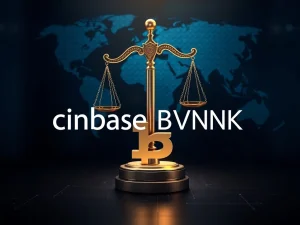FTX Payouts: Historic $5B Distribution Begins Amidst Controversy

Get ready, crypto community! A major milestone in the FTX saga is here. The FTX Recovery Trust has initiated a significant second round of FTX payouts, distributing approximately $5 billion to eligible creditors. This move has sparked considerable discussion, not only bringing a degree of relief to those impacted but also fueling speculation about its potential effects on the broader crypto markets. Will this influx of funds be reinvested, or will it lead to selling pressure? Let’s break down what you need to know about this crucial development.
What These FTX Payouts Mean for Crypto Creditors
The second phase of distributions from the FTX estate commenced on May 30, targeting eligible crypto creditors in both the Convenience and Non-Convenience Classes who have met the necessary pre-distribution criteria. This follows the initial round of payments distributed on February 18, which totaled $1.2 billion and focused on creditors with claims under $50,000. The current distribution, significantly larger at $5 billion, represents a major step towards resolving the claims arising from the platform’s collapse.
Funds are being disbursed through official distribution partners, Kraken and Bitgo. Creditors who have completed all requirements should anticipate receiving their entitlements within one to two business days from the distribution start date.
Breaking Down the FTX Claims Distribution
The May 28 announcement detailed the distribution percentages for various claim types under the approved reimbursement plan. Here’s a look at how the FTX claims are being paid out:
- Dotcom Customer Entitlement Claims: Receiving a 72% distribution.
- US Customer Entitlement Claims: Receiving a 54% distribution.
- Convenience Claims: Receiving a 120% distribution.
- General Unsecured Claims: Receiving a 61% distribution.
- Digital Asset Loan Claims: Receiving a 61% distribution.
It’s notable that Convenience Claims, typically smaller claims, are receiving more than 100% of their value, while other larger claims are receiving a significant percentage, though less than full recovery based on the petition date valuation.
Controversy Surrounds FTX Bankruptcy Recovery
Despite the relief that payouts bring, the FTX bankruptcy recovery process has been met with considerable controversy, primarily concerning how creditor claims are valued. A key point of contention is the court ruling that determined creditors would be reimbursed based on the value of their assets at the time the bankruptcy petition was filed in November 2022, rather than at current market prices.
Creditor Sunil Kavuri has been vocal about this issue, sharing court documents and stating that this valuation method means many crypto creditors are receiving only 10% to 25% of the current market value of their crypto holdings. As Kavuri explained, “Crypto holders are not whole at petition date prices as confirmed by the debtors, the United States Department of Justice, and Judge Kaplan.” For context, Bitcoin was trading around $16,000 when the petition was filed, significantly lower than its price today.
Adding to the controversy, Kavuri also highlighted in February 2024 that residents in 163 countries are deemed ineligible to receive reimbursements. This list includes nations like Egypt, Iran, Russia, Greenland, and Pakistan, leaving many impacted individuals without any recourse.
Will FTX Recovery Boost the Crypto Market?
The initiation of these substantial FTX payouts has naturally led to speculation within the crypto community about the potential impact on market prices. A $5 billion distribution represents a significant amount of liquidity entering the hands of former FTX users.
The key question is whether recipients will hold onto these funds, reinvest them into other cryptocurrencies, or cash out. The first round of payouts saw speculation from industry figures, like Alvin Kan of Bitget Wallet, who suggested a “significant portion” could be reinvested. If a large part of the $5 billion is indeed reinvested, it could provide buying pressure and potentially support the ongoing crypto recovery. Conversely, a mass offloading could introduce selling pressure. Market participants are closely watching to see how this liquidity event unfolds.
The original collapse of the FTX exchange and its associated FTT token in November 2022 had a devastating impact, contributing significantly to the market downturn known as the crypto winter. Now, the recovery process is seen as a complex event with the potential to influence market dynamics once again.
In conclusion, the start of the $5 billion FTX payouts marks a critical phase in resolving the fallout from the exchange’s collapse. While it brings much-needed funds to many impacted individuals, the process remains controversial due to the valuation date and exclusion of certain creditors. The market impact of this significant liquidity injection will be a key area to watch in the coming days and weeks as the funds are distributed.







